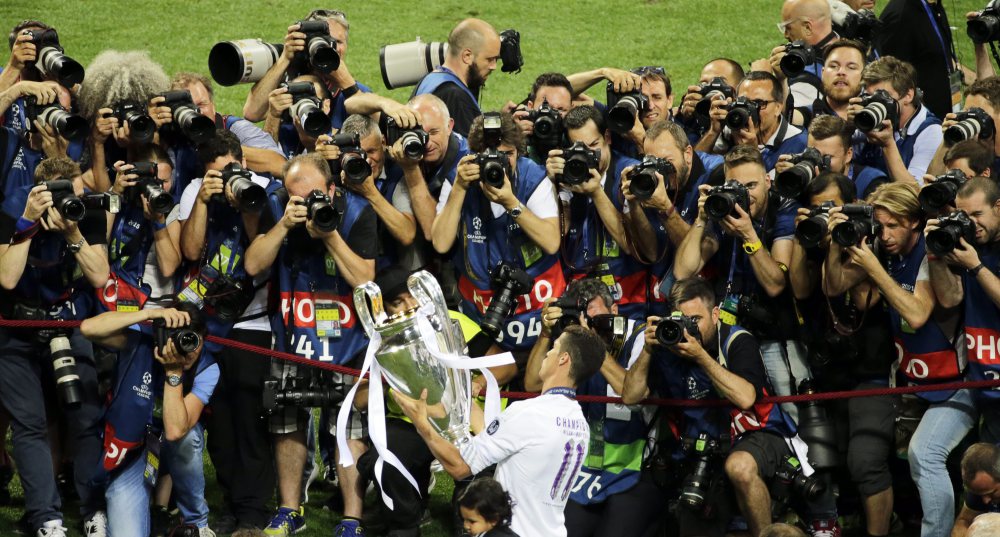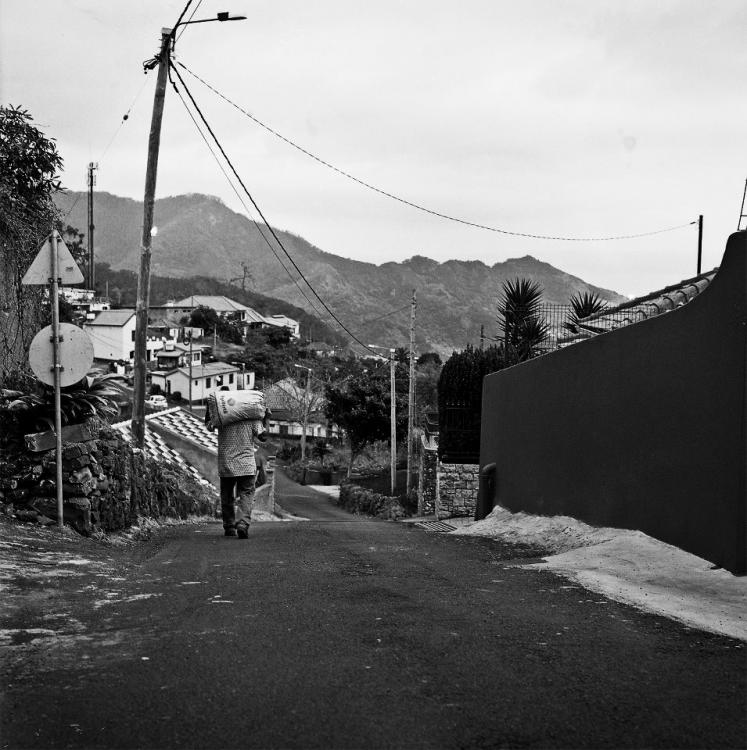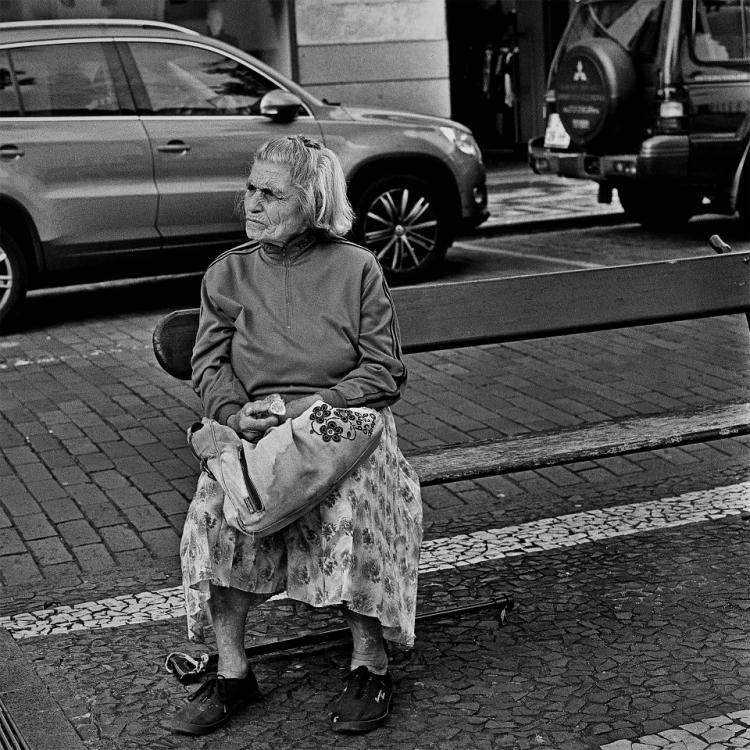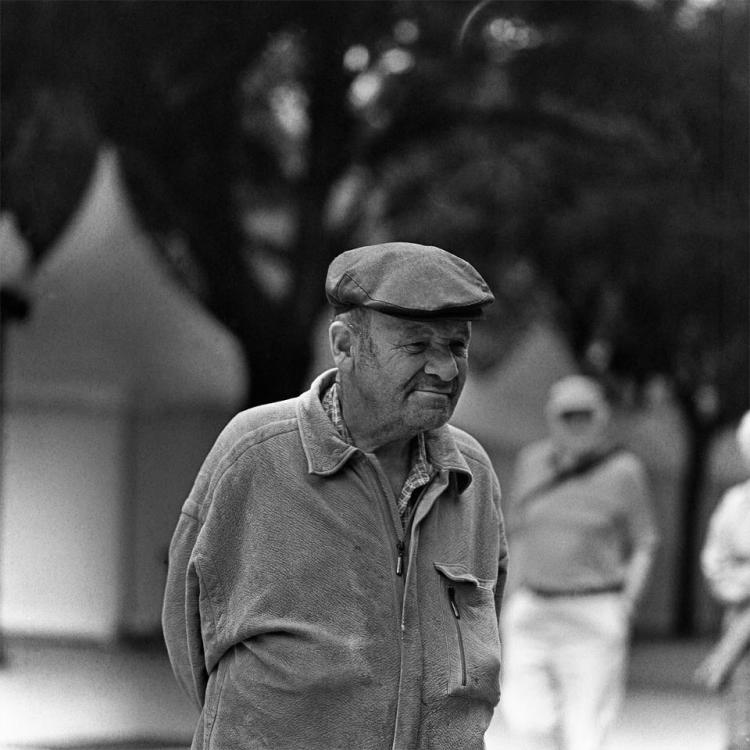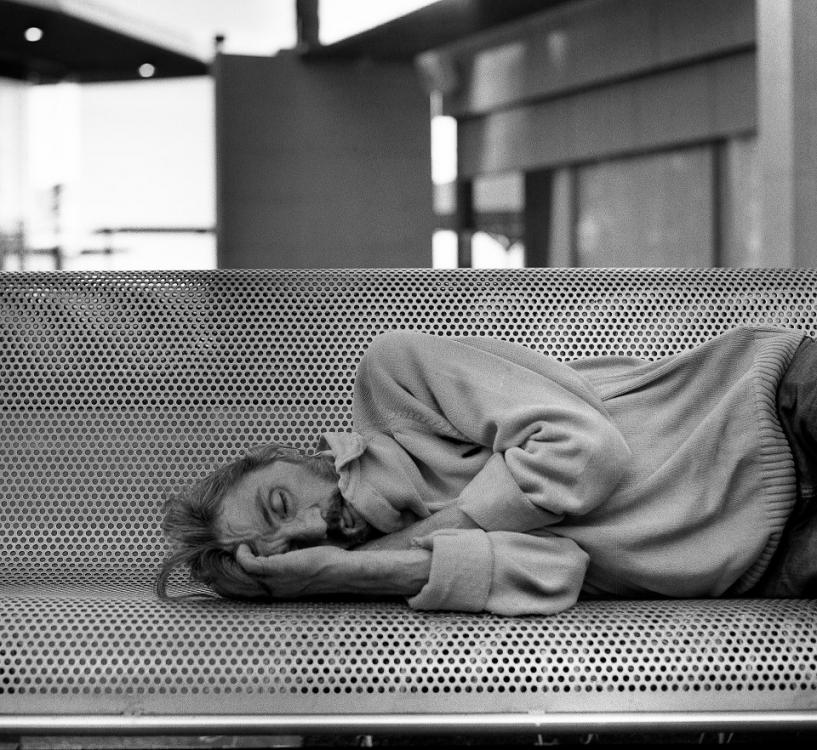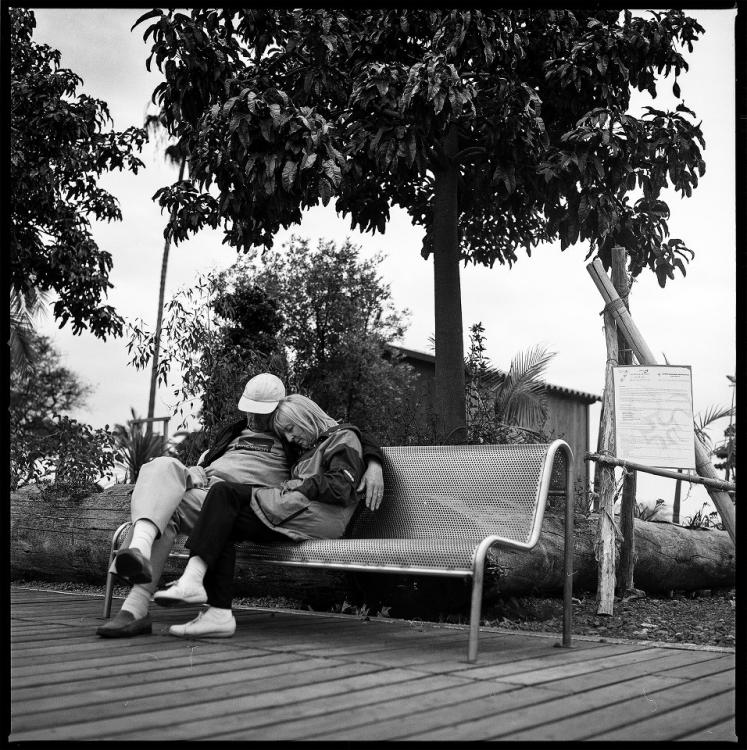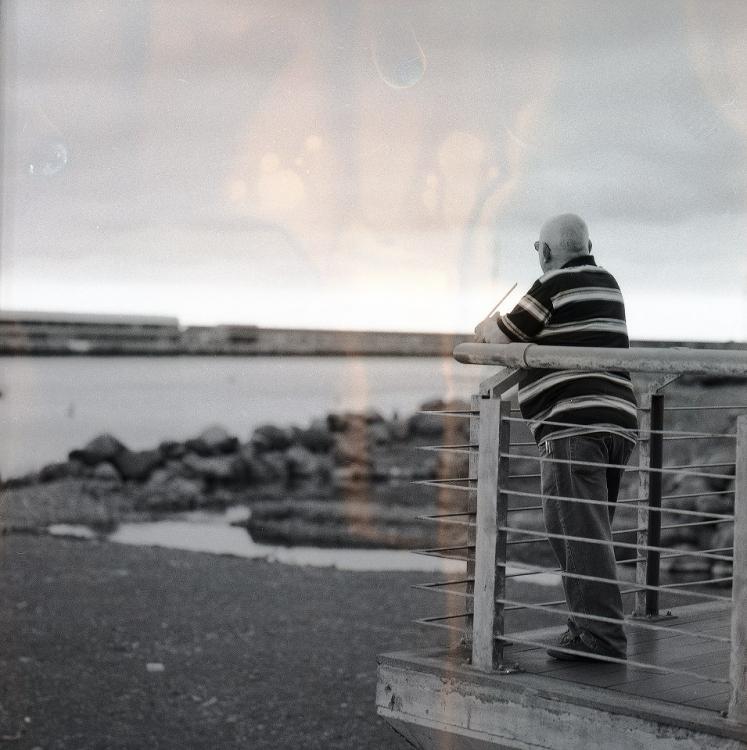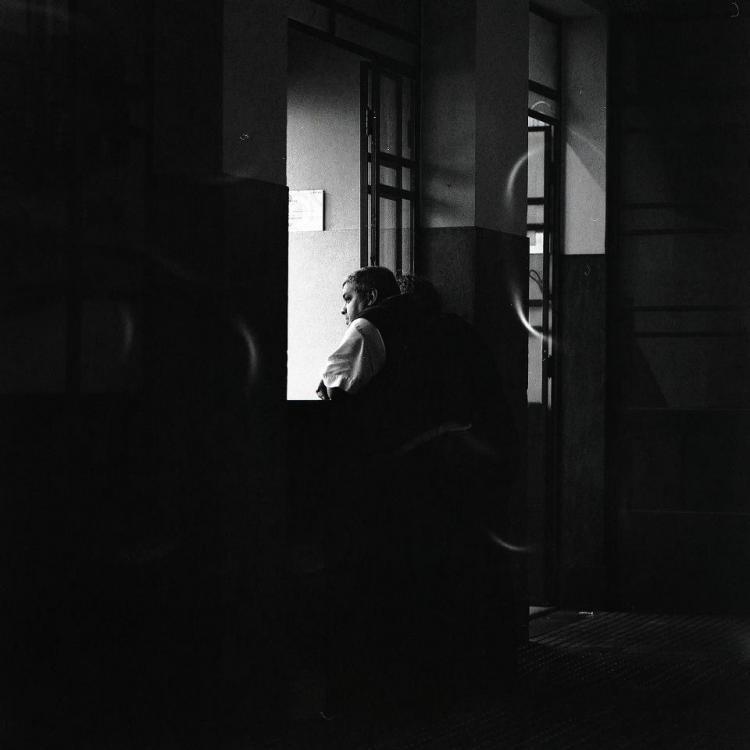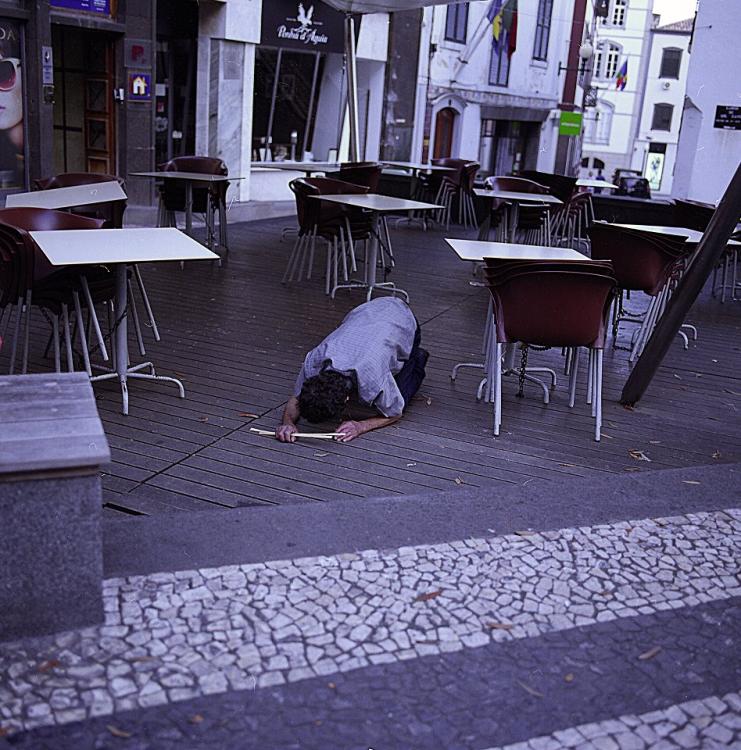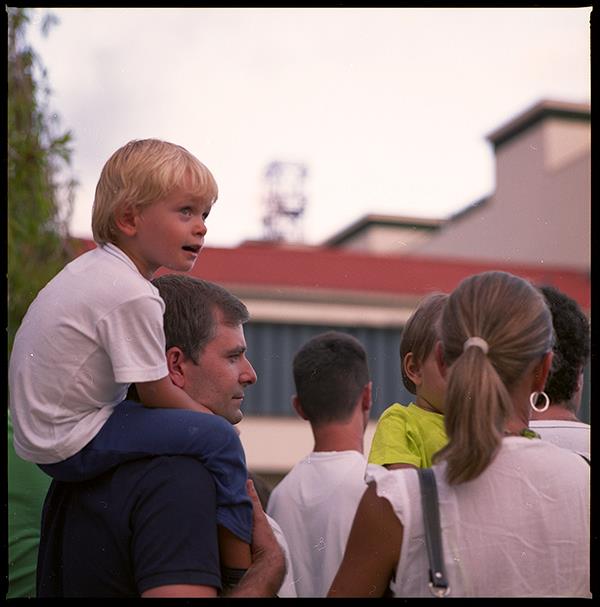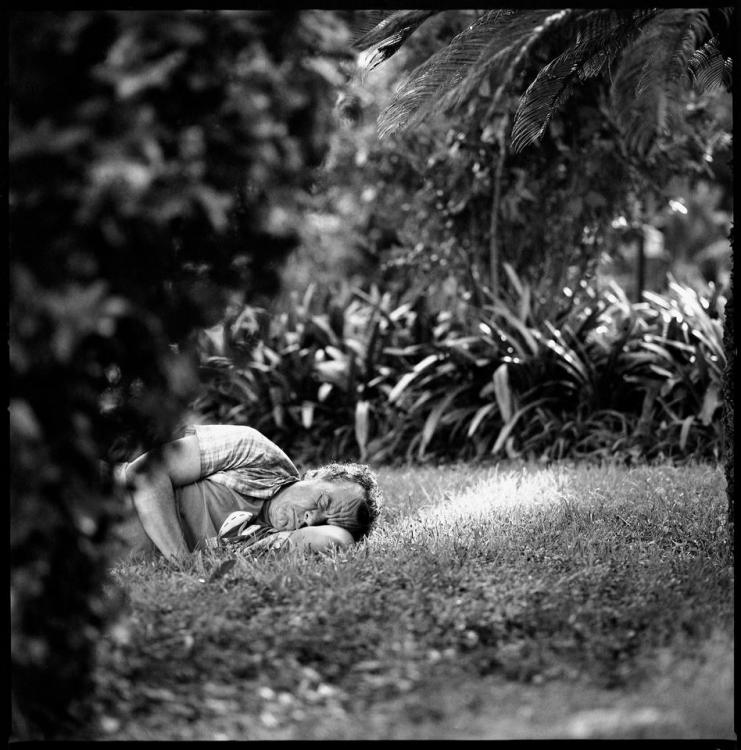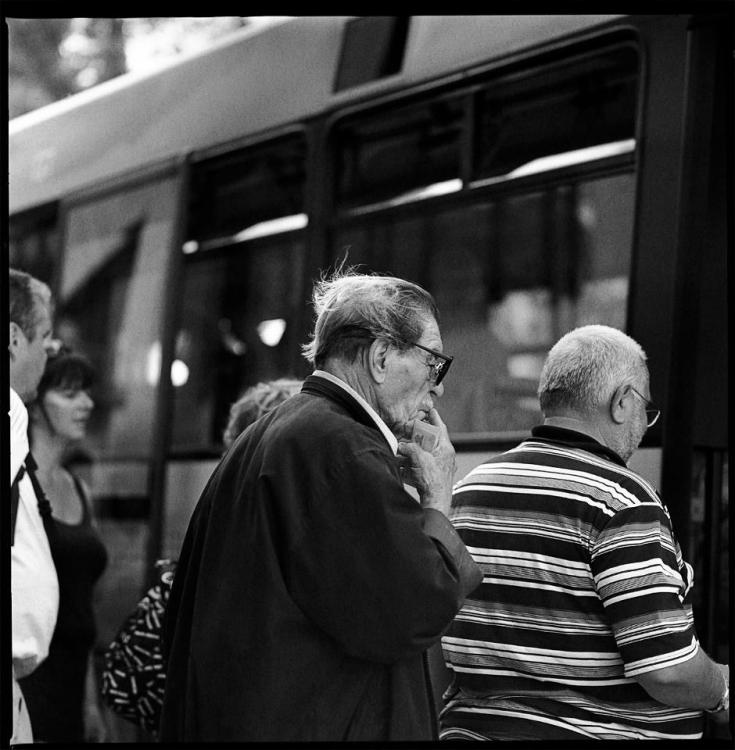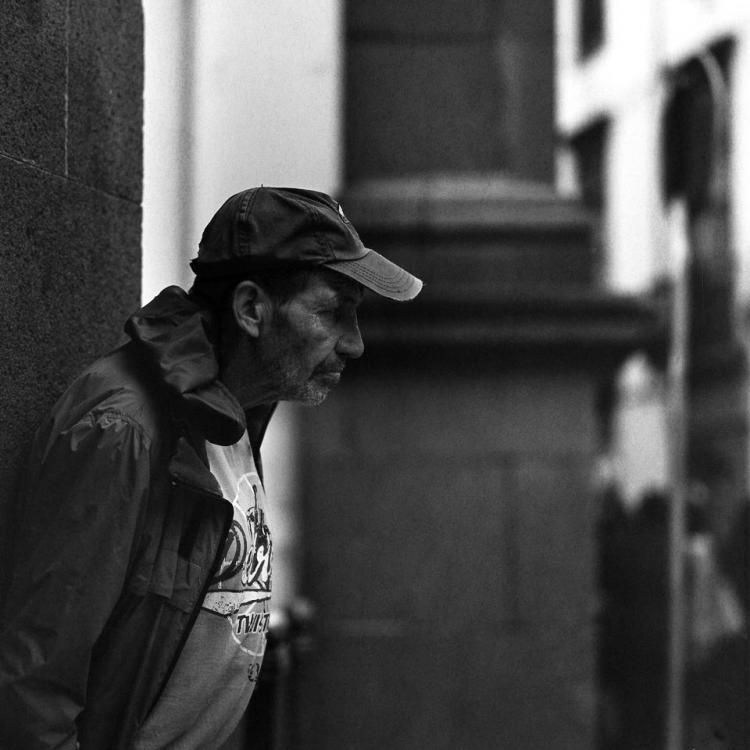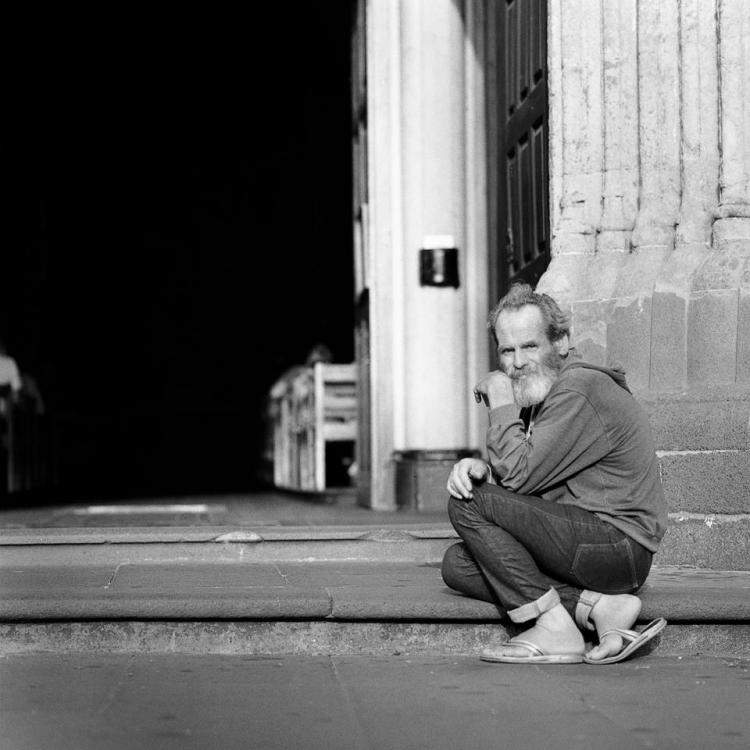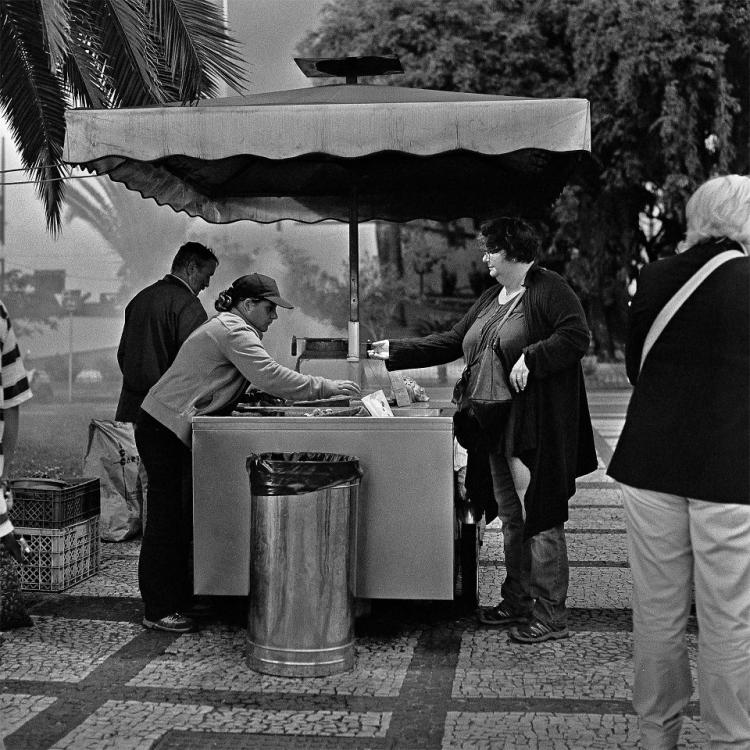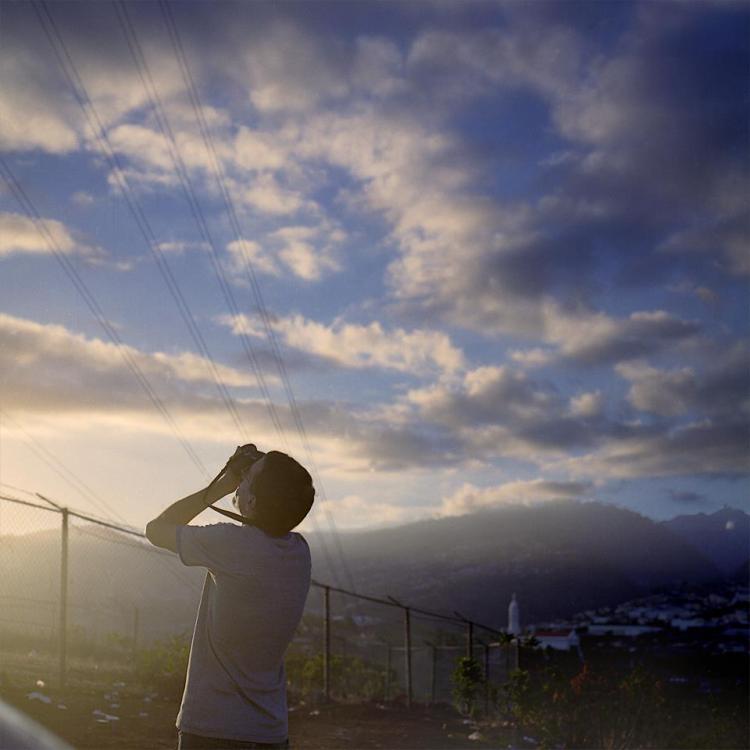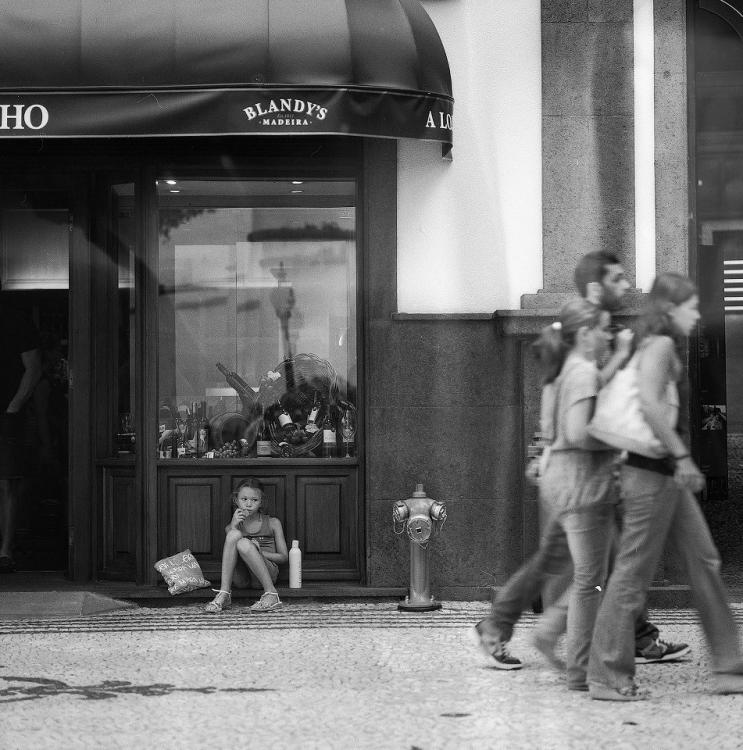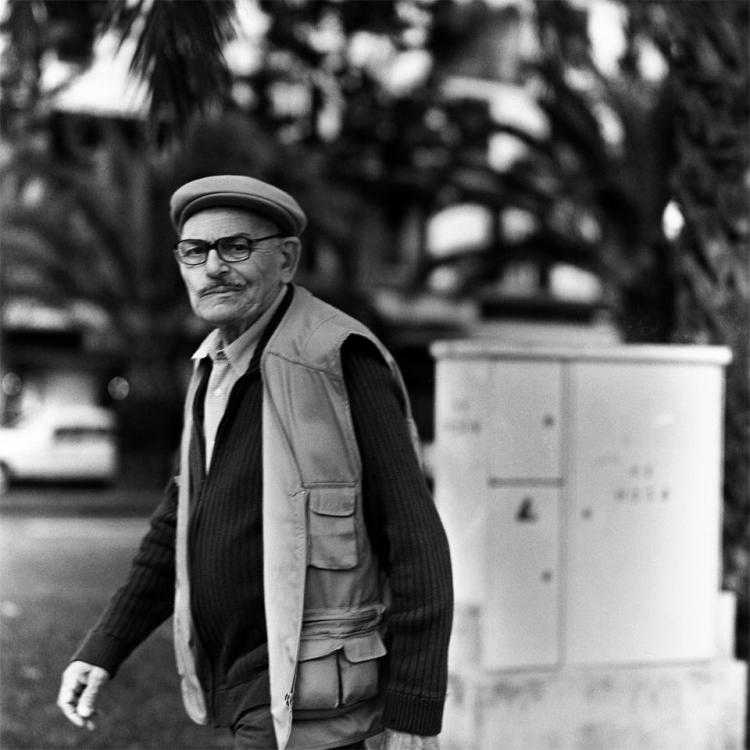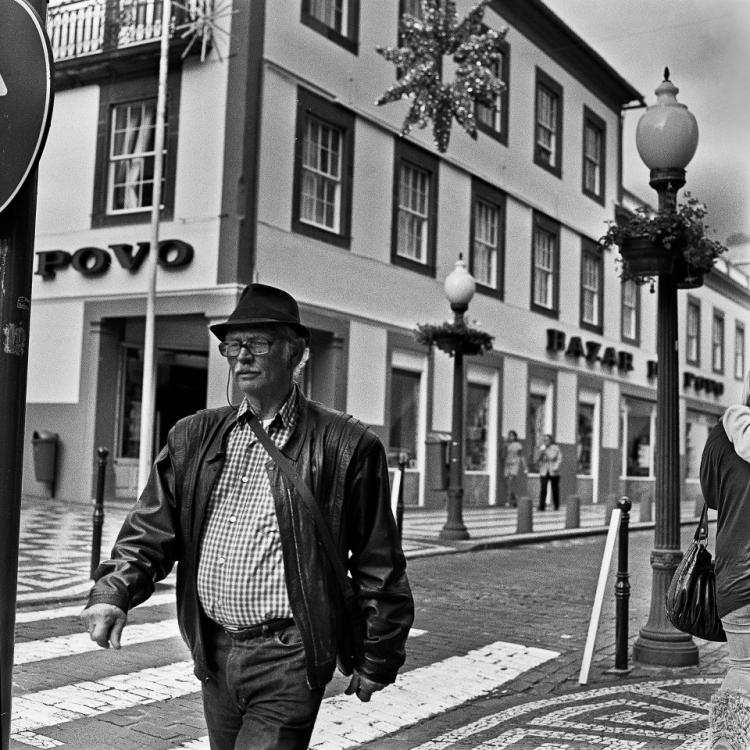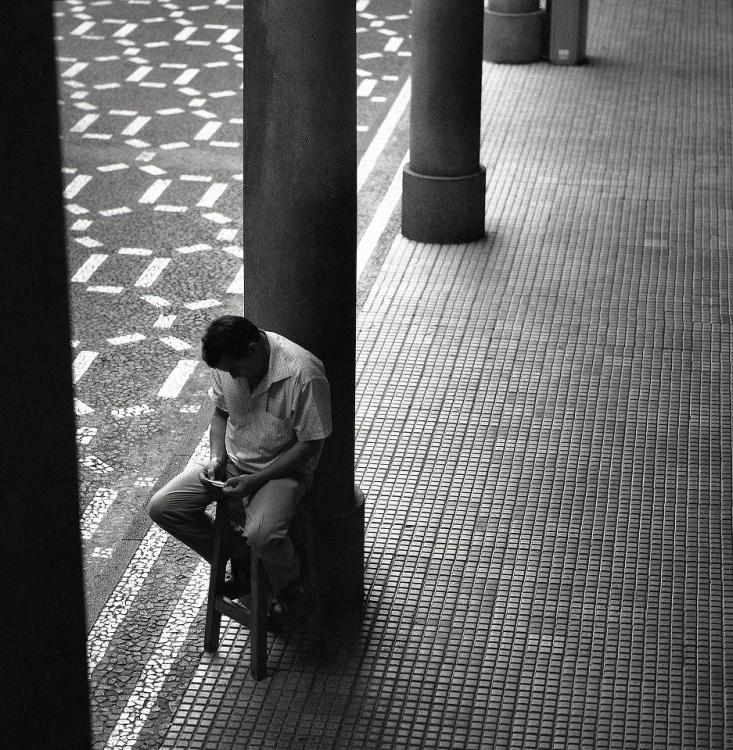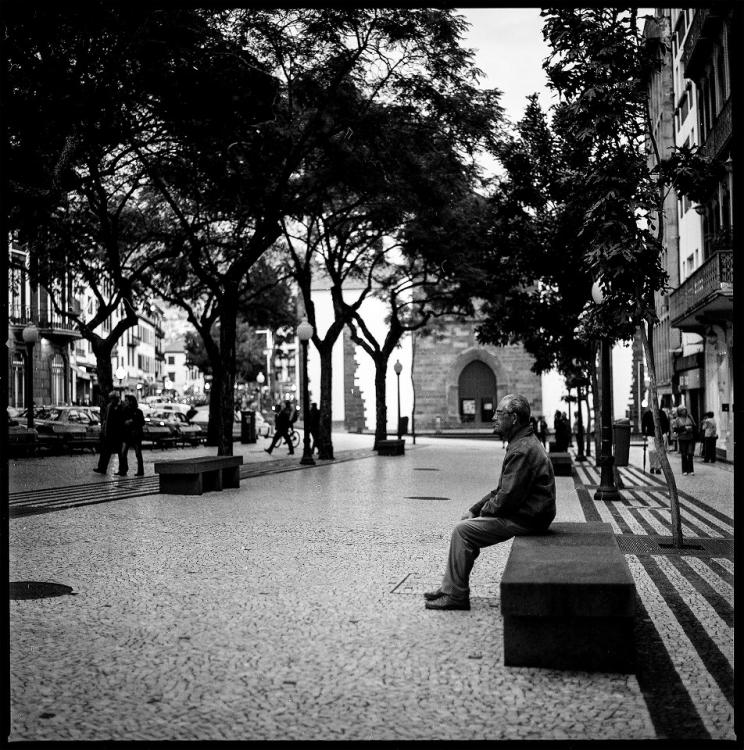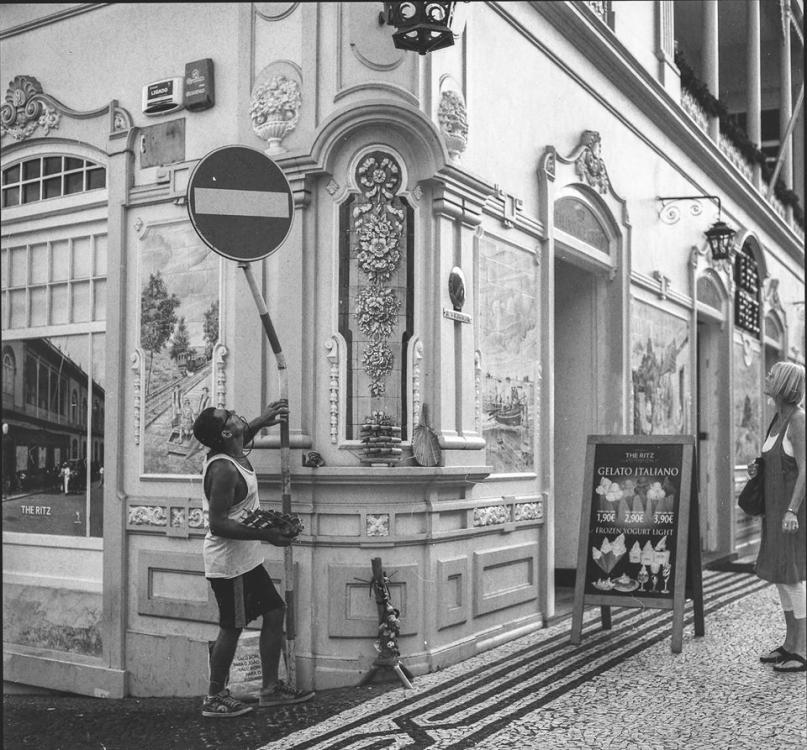Leaderboard
Popular Content
Showing content with the highest reputation on 03/07/2018 in Posts
-
With all due respect, this is very wrong. The 400 f2.8 issue which you continue to reference and described as prattle earlier on was actually my prattle about the A9 rather than the A7 but I thought I'd reply anyway. Sony have produced a camera which they push as a professional sports camera and to say it has made little to zero impact in the field that they claim it will revolutionise would be an understatement. Why? Well, lenses firstly and, once they've resolve that, ergonomics. Unfortunately, whilst professional sports photographers would love to just be able to sashay around with all our gear in a man bag, we need fast long lenses not for some "alpha male" bullshit but because we have to photograph things at distance, in low light and with good separation against often busy backgrounds. We don't use 400 f2.8 lenses because we like having to pay for, carry and wrestle with them but because we need to. To, you know, do our job. So, if Sony want to actually make any headway in the market they push that camera to then who else should they have listened to other than the people that actually work in it? Where did you source your data for the 'half dozen' photographers that might buy it 'unsponsored' ? I'll be shooting a Champions League match tonight along with 50-60 other members of the "shrinking, impoverished and literally dying" demographic that Sony are trying to appeal to with this camera. There'll be roughly £15-20K of equipment being used per metre, none of which will be sponsored and none of which will be Sony, but all those kits will include a 400 f2.8 The total spend on the equipment contained in our oversized weather resistant man bags will be about £1.8m and we will expect to replenish that every 24 months. Thats from this one game in one city. Go and have a look at the sporting calendar and see how many more events the alpha males with the big hands are covering tonight. Even so, we are still small potatoes perhaps financially against the masses but we bring something to the party that is far more important to Sony than the immediacy of getting a few quid off us. I'm in this picture somewhere The worldwide TV audience for this game was around 350 million people. That is 350 million people getting glimpses of Nikon and Canon cameras for 90 minutes. If someone wanted to convince you to buy a camera that the pros use, there really is no more effective means at getting the point across than that is there? Where else are consumers going to see professional cameras being used in those sort of numbers? The English Premier League has an annual TV audience of 4.2 billion people, all of whom are getting regular glimpses of working professional photographers using Canon and Nikon cameras every time the ball goes out of play behind the goal. It is a massive calling card for those two companies and that is why Sony want to be involved. They're not in it to sell a few thousand A9s, they're in it to sell a few hundred thousand of their other ones. So they have to produce a 400 f2.8 and they have to make it ergonomically viable to get real professional sports photographers to use it. And they have completely failed in that respect. That picture is from the 2017 Champions League final, just after the A9 was launched. You'd think a company like Sony would've been able to persuade a few people to shoot with it wouldn't you? Even by paying us to do it? Can't see one can you? And its got nothing to do with the specs, its all about it not being good enough for the job (and that is what it is, a job) that they were devising it for. Hence your dismissal of the balance issue and general body size as wittering is utterly ridiculous in that context. Try balancing that lens with that camera on a monopod and switching it rapidly from eye back to reverse over your shoulder while you use your other body with a 70-200 f2.8 and tell me balance doesn't matter. Try using cameras continuously in that scenario for hours at a time and tell me the camera being too thin doesn't actually hurt your hands, let alone before we get on to button placement and button size. As an economist, you will be able to speculate on numerous possible factors why the A9 has made more or less zero impact on the market Sony intended for it. As the actual intended customer of it, I can offer a completely non-speculative reason for it which is that it didn't have a 400 f2.8 from the get go and its ergonomics and overall performance are not good enough. The Sony A7iii looks like a great camera though even for someone with small hands like me....7 points
-

How Did They Get So Much Dynamic Range?
mkabi and 3 others reacted to Matthew Hartman for a topic
Yep. It's a well known trick. https://www.bhphotovideo.com/c/product/90629-REG/Rosco_102302104825_E_Colour_210_6_Neutral.html There's no old days about it. It's called real filmmaking. ?4 points -

How Did They Get So Much Dynamic Range?
Mark Romero 2 and 2 others reacted to Matthew Hartman for a topic
I can't speculate on real estate, but I will always air on the side of properly setting up a shot in narrative work, even as a one man band. Take the time and effort. When you're sitting in the editor's chair you won't be kicking yourself constantly and this is where coverage and proper set up matters greatly. Of course a lot of clients are laymen and they have the misconception that filming is a pointed camera and some lights, they don't have any spacial awareness of what makes up a good shot/scene, and why would they? All they ever see is the finished product. I'm constantly pushing back on those misconceptions. It comes down to approach. You have to be willing to educate people about the craft and justify your position in a respectful/tactful way. It's not an easy thing, almost everyone is going to come at it skeptically, because time is money, but you have to have a good pitch and explain value, or what they're getting for their buck. You have to read the language of each client. There will always be some adversarial clients that are not worth that battle. If they insist on shit, just give them the shit they asked for. Yeah, your standards are challenged, but money is one shade of green at the end of the day.3 points -
Hey @mercer The Rokinon 50mm Cine DS lens has been my main go-to for the last year or so, used on virtually all my projects. I wouldn't say it is "super modern," it is very sharp across the frame but not quite as contrasty as say the Sigma art series lenses, which are kind of my benchmark for that ultra-contrasty/modern look. I used to really love my Rokinon 85 (and I still do) but the minimum focus distance on the 50 is so much easier to work with that's it has been pretty much bolted onto my camera since I bought it. Here's a project I just finished up last week that is shot primarily with the 50mm (the wider interview shot and some of the B-Roll is on the Sigma 18-35, so you can see the 50 cuts well with it). Password is usu20183 points
-
At the end of the day, its about how you sell yourself (and that has every bit to do with how much you value yourself too). If I was in either the Real Estate biz or even the wedding biz, I would create a tiered pricing approach - along with a demo reel to help the client see what the difference is between what you offer in terms of service (for each price point). For example for real estate: Bronze package: 2 hour shoot - 1 day editing - $500 - Demo reel showing what is included in this price range. Silver package: 4 hour shoot - 1-3 day - $1200 - Demo reel showing what is included in this price range (if the customer is not able to see that much of a difference here, then explain). Gold/Platinum package: 8+ hour shoot - Multi-day editing - $3000 - Demo reel showing what is included in this price range. This is not newbie (I know it all) pricing.... this is.... I've been here for a while, you obviously heard of me and/or seen my work pricing. Obviously, you try to do your best on every single package - don't skimp, because you want to retain a customer, you want repeat customers. At the same time, figure out what you are capable of doing within the set parameters, don't apply nd filters on the window if you only have 2 hours. Nonetheless, you go the extra mile for the Gold/Platinum package - use your own creative facilities for this.... I can't teach you vision and/or creativeness... that's all you. But here is a tip, people have a hard time envisioning themselves in a space and how to fill a space, this is why they have staging (they put rental furniture) to fill a space. Go the extra mile by... I don't know... hire actors (they are a dime a dozen willing to work for cheap - try mandy.com... audition first, Rolodex the good ones for repeat performances, just don't do the same crap in every video), here is an example: get a couple that are engaged in a conversation with a mug of coffee - laughing it up. You don't have to have a real dialogue going on, mute them out and have your choice of music overlayed. Have children running around, or a teen browsing on the ipad nestled on the couch... This is how you sell yourself... BTW, for the gold/platinum package only (actually the best videos in this category), stamp your name and/or company logo on it. Because, if its a good video, people will associate the video with the person creating it not the real estate agent selling the home, thereafter - depending on the demand - you adjust the price. Editted to add: If you are new to this.... I would throw in some stuff for free the first few times.... its like how drug dealers throw it in till you are hooked on it approach2 points
-
How Did They Get So Much Dynamic Range?
Mark Romero 2 and one other reacted to Kisaha for a topic
@Matthew Hartman So true! "Education" is a big part of our job, especially if you care for a lasting relationship with a customer. That goes with directors as well, being firstly, and mostly, a sound man, puts me in the place to have to constantly inform them about sound, and try to educate them on the fly, so to make my life easier, my job worthier, and save them some money in the process!2 points -
How Did They Get So Much Dynamic Range?
Matthew Hartman and one other reacted to Kisaha for a topic
@Matthew Hartman haha! no it's not, it's all about 20 stops of dynamic range, 9 axis IBIS and millions of ISO! By the way, a simple ND filter on a window, it costs a few dozen dollars (re-usable of course), and saves you a few thousands dollars of lighting equipment. When I was really young, and starting in the business I covered hundreds of windows with ND filters (and black curtains)! Of,course I do not expect @Mark Romero 2 to spend 20 hours to cover everything with ND filter, and if you have 20 and 30 minutes, don't worry about the dynamic range, just go there with your gimbal and shoot everything you can! But the difference sometimes, is not the cameras or the equipment, nor the budget, but time. If you can't take the time (or talk your customers to give you the time), then maybe you can't do it. Certainly not in 30 minutes. But do not worry, if they do not give you the time, then they do not care!2 points -
How stills killed casual video for me
Rodolfo Fernandes and one other reacted to Mattias Burling for a topic
This is probably the worst advice I've ever come across. There is so much work for still photographers out there its insane. For every corporate video or commercial there is need for at least ten times as many stills. But luck is not the way to get a piece of the action.2 points -
smartphone users take snapshots.. as do point & shoot camera users. chances are people investing in a FF A7 series are serious about photography (wether enthusiasts or pro) hence indeed buttons & overall ergonomics being of importance. touch screens are cool and a welcome addition, but when you're eye is on the EVF/OVF, nothing beats dials, wheels & buttons imo. especially when shooting manual. wrong again pal. Pros want best of both worlds, they want the performance & ergonomics of DSLRs along with the advantages of mirrorless (EVF, IBIS, no mirror slap, no AA, more AF points/spread, adapting lenses, better video etc) with the added benefit of weight/size usually still being inferior to flagship DSLRs. And with every body generation going in this direction, more pro photogs (or simply DSLR advocates) are switching over. That being said the majority of pros are still clinging on to DSLRs for performance, durability & ergonomic reasons. In any case I welcome this direction from Sony/Fuji and predict A7iii will sell like hot cakes, in fact it is currently already the number one best selling mirrorless camera a week only after it's announcement: https://www.amazon.com/Best-Sellers-Electronics-Mirrorless-Cameras/zgbs/electronics/3109924011 Seems like they're not off to a bad strategy..2 points
-
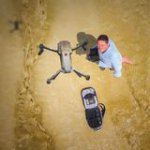
Sony a7 III discussion
Inazuma and one other reacted to Robert Collins for a topic
Either we are talking at cross purposes or you are missing my point completely. I think that it would be totally 'wrong' and 'incredibly inadvisable' for mirrorless camera manufacturers to design or redesign their cameras based on the 'perceived ergonomics of pro photographers'. Pro photogs only make up around 2% of ILC camera buyers and the other 98% dont have the same habits. In the same vein, you talk about 'buttons and dials' needing to be bigger while smartphone users (99% of photographers) dont actually use them at all. It seems 'pro photogs' want mirrorless companies to build cameras that closely resemble 'DSLRs'. Does this make sense? Since 2012 DSLR sales have halved in value. Since 2012 mirrorless ILC sales have increased 77% in value. So it literally makes no sense at all for 'pros' to keep telling mirrorless camera companies to go copy a failing business strategy. It should be 'pretty obvious' that mirrorless cameras are succeeding because they are 'different' from DSLRs not because they are striving to be the 'same'.2 points -
are those gimbals a good buy?
Matthew Hartman and one other reacted to Mark Romero 2 for a topic
LOL! Yes, if you DON'T look like a complete derp, then you are doing it wrong. On the other hand, just because one normally looks like a derp doesn't mean one will be naturally good at using a gimbal2 points -

Sony a7 III discussion
Gordon Zernich and one other reacted to Robert Collins for a topic
Sorry. This is an 'A7' thread' and I have bought at 7 x A7 cameras - which is probably 7 more than you - why should you tell me what is off topic? 'I’ve got small hands. We don’t need tiny flagship cameras. What we need are cameras with buttons, dials and handgrips that don’t feel cramped. And even small cameras can benefit from chunkier dials and a beefier hand grip.' This sort of comment - which sort of is 'well if you make the camera bigger I might eventually buy it' is on topic while my comments about 'why I am a multiple customer of this camera is off topic' - give me a break!2 points -
How stills killed casual video for me
webrunner5 reacted to dbp for a topic
As always, I think the experiences are largely going to be dependent on your market. I'm based in Vancouver right now. Definitely plenty of folks making money solely with photography and video. I'm far from rich but I've managed to pay my bills doing nothing but freelance video work for 5 years now. It's funny because there's more competition than ever thanks to increased desire and the low cost of equipment. But there's also more video/photo media than ever. It's possible to find your way, but it certainly won't be easy. I can also only speak on the industry in the last 8 years or so, since I'm in my mid thirties. I have noticed on a pattern on forums like these, where the older folks in their 50s and 60s have a different view on the current market. Seems it was easier to make a solid living then, where-as now it seems like there's the high end and a tooooooooooooooon of work at the low, barely scraping by end.1 point -
How Important is 10-Bit Really?
Matthew Hartman reacted to mercer for a topic
Yeah, I definitely need the paint by numbers version of this color conversation.1 point -

How Important is 10-Bit Really?
mercer reacted to Matthew Hartman for a topic
I sure wish this conversation could be a little more laymen.1 point -

Fuji X-H1. IBIS, Phase Detect 4K beast?
Timotheus reacted to Matthew Hartman for a topic
Trust me, it's bewildering to many Americans as well. I won't get into political conversations here, so if anyone has a retort you will not get a follow up from me. But we definitely need a good overall of our public policies in my country. Webrunner's story is not unlike many, many Americans. Statistics show that many Americans are roughly a paycheck away from total poverty and many go bankrupt with medical bills, even with having insurance. I recently had a talk with my 13-year old son about what to do if some crazed individual comes to his school with a weapon. Not a conversation I ever imaged I'd have to have with my children. It's surreal.1 point -

are those gimbals a good buy?
Mark Romero 2 reacted to Matthew Hartman for a topic
I attach my Z Crane v1 gimbal to a shock-absorbed boom arm mounted to a vest. Two things happen here. The fourth axis is shock-absorbed, where these 3-axis gimbals totally fall apart the most, and I'm also not wearing out my arms holding up a metal pistol grip all day. Spent muscles are shaky muscles.1 point -
@Kisaha Oh, don't get me wrong, I'm very grateful to enjoy my US-based prices, the European VAT tax alone would drive me insane and seems unjustly high, on top of already higher prices. But my experience with my Audio Technica system has been great, actually. It has been just fine for talking heads, as well as mic'ing up grooms at weddings. The range is impressive, and I've never had any of the dreaded blips and audio bugs of the Sennheisers. Initially I worried there might be some kind of interference with things like wifi and that, since the 2.4 ghz band is pretty crowded, but I have had it for... at least two or three years now... and never had any problems. Like @IronFilm said, it's a minor drawback that the receiver doesn't have user-replaceable batteries, but it lasts a long time and I always have USB battery packs with my gear just in case. The transmitter just runs on standard double AA batteries, so I just keep some eneloops charged all the time and throw them in when I go shoot. The receiver also has a little display with battery, channel and signal strength information, so you can see the battery levels of both at a glance, which is pretty cool. I would say the build quality is not as robust as mics like the G3's. No metal to speak of, the transmitter is a touch bigger, and pretty plasticky, but still easy enough to hide. The receiver is also larger than the competition with the dual antennas attached. But like I said, I got it for a song, and haven't had any issues.1 point
-
Glad to know somebody gets it! I don't use luts in grading, but a lut can help with "client preview" on set.1 point
-
How stills killed casual video for me
jonpais reacted to Mattias Burling for a topic
This type of attitude is a sure way of failing at it. That's for sure. I don't have the energy to go into long texts about adapting to how the industry is developing, branching out, multi tasking, etc. But in short you are wrong. The only once that won't make it is the guy expecting to sit at home and then get approached by clients who just want someone to press a shutter button. I have worked as a journalist, in marketing and public relations for small companies as well as huge global players and government agencies for over ten years now. And believe me, there is a lot of jobs where being skilled as a photographer is more than just icing on the resume.1 point -
Matt, I always look forward to your posts because there’s a possibility you are working on a film with a different camera. The interesting aspect is that you really find that narrative sweet spot with every camera you use. The Rokinons are interesting and I’ll be keeping an eye out for them but my only concern is that they seem like they’re big chunk of lenses? Nah, I like the grade it fits with the warm music and location... I just wasn’t sure if the 50mm Rokinon was warmer in tone. For instance, I recently sold my beloved Nikkor 35mm 1.4 because it was just too damn warm... which would have been fine but it didn’t really match my other Nikkor lenses... I ended up spending too much time correcting the images shot with it. I tend to be very intimate with my actors when I shoot. In my films, the camera is a character or narrator, so I prefer to be in the mix of the scene... so anything too wide or too long just doesn’t work for my aesthetic.1 point
-
are those gimbals a good buy?
Don Kotlos reacted to scotchtape for a topic
There are so many tracking shots with telephoto lenses in films, I don't understand why you think they are seizure inducing... Common shots are cityscapes and Aerials as well as tracking characters. Not to mention smaller frame = lower costs (set design) Gimbal makes both of these accessible to those of us with no budget where we couldn't do this before (including interesting parallax in urban landscapes). Also the movement can be subtle (as it often is in 24p to avoid judder) so I'm not sure why you think we are swinging the camera wildly around.1 point -

are those gimbals a good buy?
Matthew Hartman reacted to Don Kotlos for a topic
Using compression with moving shots can create some very interesting effects of things moving at different speeds or directions. You can also use it as another way of blurring the background with moving subjects, or even keeping the tight perspective when the subject moves towards or away from the camera. Here is one example with a 100mm lens, but there are plenty for you to explore. You might not like it but as a cinematographer you should open your mind and be able to use tools to their full extent.1 point -

7" on camera monitors
markr041 reacted to webrunner5 for a topic
Honest question. Why would you pay 1500 bucks for a SmallHD 7" monitor with a 1000 nits when you can buy a Atomos 4k Recorder with 1500 nits for the same money or a lot less with the Flame?? I mean everyone sort of Needs a Recorder. And you don't Have to record with it.1 point -

are those gimbals a good buy?
Matthew Hartman reacted to Dan Wake for a topic
I hope my gimbal will be enough to stabilise this1 point -
It is math. Half are below the median.1 point
-

Roger Deakins - at last
Emanuel reacted to Matt Holder for a topic
Nominated 14 times - finally got one in the bag! Congrats Rog! (not that you needed this kind of validation - your and your crews work speaks for itself)1 point -

Lenses
mercer reacted to Matt Kieley for a topic
Thanks @mercer that means a lot. I had the NX1 in early 2015 and sold it (to someone here on this forum) when I got an apartment with my girlfriend, so I could have some extra money in the bank. The 50 was definitely nice, even if I didn't have it long enough to use it on a shoot. I did sound for a web series which was shot on the Blackmagic Production Camera 4K with Rokinon lenses. I lent the DP my Rokinon 50mm and he absolutely loved it. I don't think I have any NX1 footage besides the footage of the two videos I posted. I don't save most of my test footage.1 point -
How Did They Get So Much Dynamic Range?
Mark Romero 2 reacted to Aussie Ash for a topic
Here is some of the gear Red screen productions have been using lately "Ruben Sarian" Ceo of Red screen productions Canon EOS C200,Sigma 18-35 f1.8 etc https://www.sharegrid.com/losangeles/people/ruben-redscreenproductions-com1 point -
How Did They Get So Much Dynamic Range?
Mark Romero 2 reacted to Aussie Ash for a topic
here is quite a cool "behind the scenes" Red Screen productions put together.1 point -

Stock Footage - Getty Image Etc.
IronFilm reacted to fuzzynormal for a topic
Can't really afford to jump on a plane unless I'm getting paid, so it's actually a silly biz model for me. Of course, for more affluent people that want an excuse to go somewhere on their own dime and "work," it's a decent rationalization. That's not snark. It's part of the reality of creative crafts. One sees it in many creative fields.1 point -
Let's give 2nd look on that test a chance... People generally have that idea. Banding depends on the bit depth. That test leads to a bit different path though. Actually, it is even beyond color sampling, also bit rate. That is, not only bit depth. Practice redefines theory much often to keep going to ignore the evidence : ) Mark's @markr041 posts hinted it all :-)1 point
-
How Did They Get So Much Dynamic Range?
Mark Romero 2 reacted to Kisaha for a topic
In the old days, we were using lights for indoor shots, and put ND filters in most critically positioned windows! And there was a crew, also.1 point -
Anyone with F3 and Video Assist? Need help setting it up.
IronFilm reacted to BenEricson for a topic
Can you post some frames? In my experience F3 is up there with the C300ii and the Red. I found it much easier to work with than FS7 or FS700.1 point -
Fuji X-H1. IBIS, Phase Detect 4K beast?
webrunner5 reacted to Inazuma for a topic
@Yurolov where have you seen the IBIS being super jittery?? I just had another look at that video. It appears at least some of those clips were taken on different days. There are clouds in some of the Fuji clips, where its completely clear in Panasonic ones. And yeh, the Fuji looks overexposed. He may have knocked that exposure dial accidentally.1 point -
Maybe it is so long since I last used G3 regularly, and because don't want to dare risk annoying the old guard who always recommend G3 as the starting option rather than newer UWP-D11, I have thus become too reserved in my recommendation of UWP-D11?? But when you think about all the technological benefits (not just the design/ergonomics of the Sonys, such as the battery trays, external buttons, top lights, smart shoe, etc) of Sony: actual dual antennas (not faking it like the G3 does in using the output cable as the 2nd one, which is of course not tuned to the right length for the frequency), having dedicated RF tuner circuity for both antennas (so the Sony is constantly switching between the two for the best possible signal, vs the G3 which only jumps to change antennas if the current one completely fails), having a compander in the digital domain (vs the analogue one of the G3, which doesn't perform as well), and more. Well, maybe the Sony is more advanced than I give it credit for? (when I write it all out like that! Is quite a bit, maybe I need to further expand on why Sonys are better in a full on blog post. But I don't want to promote this too much.... I like being able to pick up my Sony wireless on the cheap from eBay And I fear I might end up putting a spike in their prices! Then again I do already have FIVE Sony wireless, at what point do I say "enough is enough"? Ha!) Anyway, sounds like a tough head to head shoot out is needed! I've never seen a really well down head to head comparison in the field done between Sony vs Sennheiser1 point
-
hahaha! It is funny, because it has a small gain of truth to it :-P I assumed you wrote AC for "Air Conditioning"1 point
-

Fuji X-H1. IBIS, Phase Detect 4K beast?
Trek of Joy reacted to Django for a topic
Had a very quick go at one today during lunch break.. i'm in love with Eterna.. however RS seemed kinda bad (not A6500 bad but noticeable) any solid numbers yet?1 point -
How Did They Get So Much Dynamic Range?
Matthew Hartman reacted to Mark Romero 2 for a topic
Well... that is kind of what I thought at first, too. I thought they had to be either bouncing light off the ceiling or bounce off a wall or through a scrim. But looking at it closely I don't see ANY reflections for either bounced light or shoot through light. I can see reflections or practical lighting in the ample glass and chrome, but I don't see any telltale signs of bounced / shoot through lighting. There is a ton of glass in the shots (windows, shower doors, mirrors, pictures in glass) and using bounced or scrimmed lighting you would expect to see either direct reflections of the light itself, or reflections of the wall, or the shadow of the camera person. Yeah, that is basically my fate. Had to photograph a house once where they gave me 20 minutes and I had to shoot while the owner / wife was having a mental breakdown (she was being forced to sell the house due to a divorce settlement) AND they had five maids (cleaning crew, technically) cleaning the house while I was in there trying to shoot. So ideally I would like to keep lighting to a minimum.1 point -

How Did They Get So Much Dynamic Range?
Kisaha reacted to AaronChicago for a topic
They're just using a ton of fill for the inside. You could blast a few HMI or Daylight LEDs into a bleached muslin sheet on the opposing wall. Then if you still have a decent amount of light to play with use more diffusion 4 ft from the wall.1 point -

Sony a7 III discussion
Gordon Zernich reacted to Robert Collins for a topic
Nope. Sorry, I simply will not accept that because you are so WRONG. The complete collapse of the global camera business in a world where photography has increased 'exponentially' is entirely due to ''pros' talking ergonomics' = 'it should work with a 400 f2.8' rather than listening to 'economists'. You can all prattle on about how an A7 series doesnt balance with a 400 2.8 lens as long as you like but you should recognize that as well as getting a smaller demographic, a more impoverished demographic you are 'literally' a 'dying demographic'. In a world whereby 99% (almost exactly) of photographers use smart phones, where are you in a position to define 'ergonomics'?1 point -

How Did They Get So Much Dynamic Range?
Kisaha reacted to webrunner5 for a topic
I know most of us know a decent amount about shooting Homes, but this guide is pretty good at telling most of what you Need to know. http://www.chrisfeltus.com/guides/ultimate-guide-to-real-estate-video-and-photography/1 point -
8K is the future, buying a 4K domain would be like having an HD reference in your site or something like "eos" or both...1 point
-

How Important is 10-Bit Really?
kidzrevil reacted to Matthew Hartman for a topic
8bit has very little bandwidth to be pushed around in grade. 8bit cameras are setup by the manufacturer through internal testing to capture the optimum image gradiation for it's respective sensor encoding. Just because an 8bit camera offers log or exposure tools doesn't mean that the image is that mallabe. The 8bit HEVC images coming out of my NX1 are vibrant and brilliant stock, and I notice very little artifacts as is. But I have little room to push channels in Lumentri before I break it and see artifacts, banding, macroblocking, noise, etc. Thankfully, Neat Video comes to the rescue and does a stellar job at cleaning up that mess, which is exactly what it was designed for. When I then view those results on my 10bit monitor, the image holds up rather nicely. For those with 8bit systems, don't feel discouraged or left out of the conversation, you have viable options.1 point -
Actually, well exposed you can do wonderful things with 8 bit, if you choose the right software. But if you shoot log/HLG or plan to do a lot of grading/keying/vfx insert, and don't want any banding or artefact, 10bit is nessecary for perfect results. That being said, "perfect" depends a lot of your sensitivity, your eyes, and of course, the broadcast media. Since I have a GH5 with its 10 bit, my videos are not fundamentally better, but I'm more satisfied about what I can do in postprod1 point
-
Crop mode on the eos m has a area which is slightly larger than super 8mm, it's somewhere between 1/2" and 1/1.7" sensor size, depending on which resolution and aspect ratio you pick, so super 16 lenses would be fine on the eos m. For example, 1800x1024 resolution on eos m is a 4.66x crop from full frame, whilst super 16 is approx 3x crop. One of my no-brand adapters seems like your Fotodiox one, where the 6-66mm ends up exactly upside down. With this particular adapter I've been able to get closest to parfocal performance, so it's probably the best option for this lens. I made a video to test parfocal performance and vignetting in 16:9 and 4:3 aspect ratios, using this adapter. Movie crop mode records slightly off centre horizontally, so if you want 4:3 aspect ratio and are getting vignetting - you have to recentre the image in post... which I've done below in the 4:3 shots:1 point
-

BMD Pocket Cinema Camera still worth it in 2017?
BenEricson reacted to Philippe Orlando for a topic
Yes1 point -
How stills killed casual video for me
Tim Sewell reacted to mat33 for a topic
When I started imaging more seriously, I was shooting 95% video/5% stills. I have now shifted to the opposite, and often when I head out my dedicated camera is incapable of shooting video. A lot of my casual shooting involves family and the kids, and with video you just end up observing the moments behind a camera worrying about getting the shot rather than whats happening. I find with stills, I can get the shots I want and still be involved for the majority of the activity. For me the entire workflow has become key -take some shots-->pop SD card into iPad/iphone adapter-->load into LR mobile-->adjust then and there or later on desktop at home or on phone when have spare moment, very very fast and flexible and has changed the way I work. I have just got an instax printer, and am enjoying the merging of digital and analog - its been great seeing how both adults and kids react to actually being to hold a photo of themselves rather than just seeing it on a phone screen (for most kids it all they know), and sticking 'real' photos of the kids on the fridge is magic.1 point -

How stills killed casual video for me
Parker reacted to Rodolfo Fernandes for a topic
When i started shooting (stills) all i did was grab the camera walk around the city where i live and try to look for interesting things happening around me and i do remember the feeling i had when i actually captured something nice! And at the time i was using medium format so i only had 12 chances to get something awesome, and i really miss the ritual of going out shooting and then developing those rolls just to find what came out of it, they werent always the best picture one could take but it was my own personal ritual which i think i will go back to.1 point -
You are right ceteris paribus, but the bit depth statement and the visual comparison ignores the role of bitrate (that is, you have compared different bit depths for highly compressed clips (I assume)). The test posted above shows us that bitrate matters also, and that it matters more. Remove the high compression, and the difference by bit depth shrinks almost to invisibility. So you are correct, it is just that it turns out something is even more important than bit depth (they interact). That is, when you use 8 bits but do not highly compress you get much less banding. I have heard this before; I am not claiming the bitrate effect is correct other than interpreting what the poster showed (and I do not see anything wrong with his test).1 point


